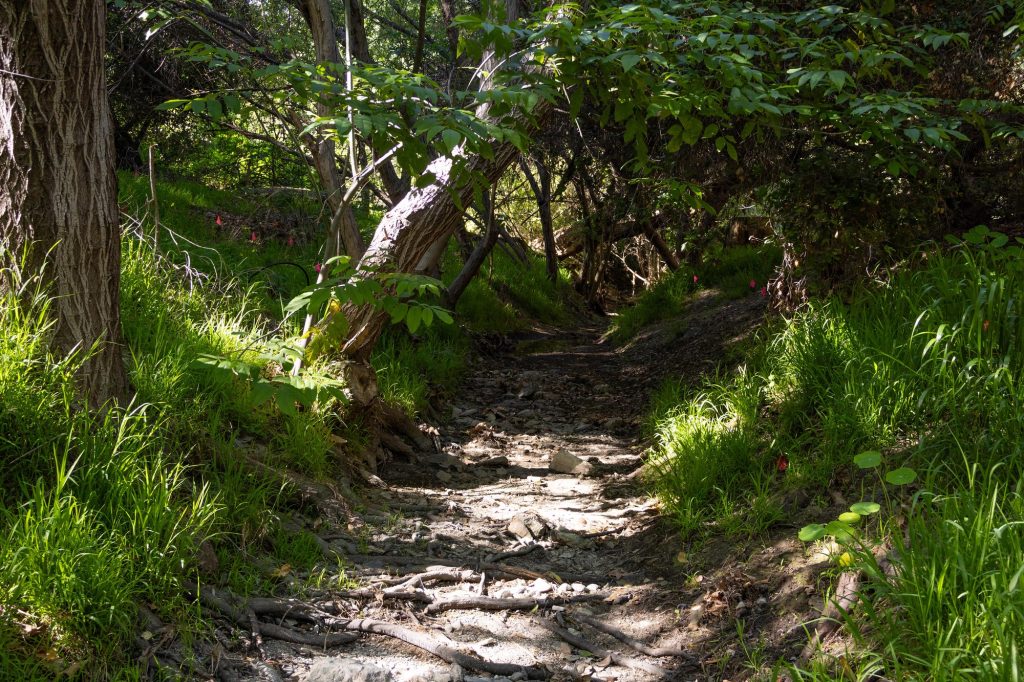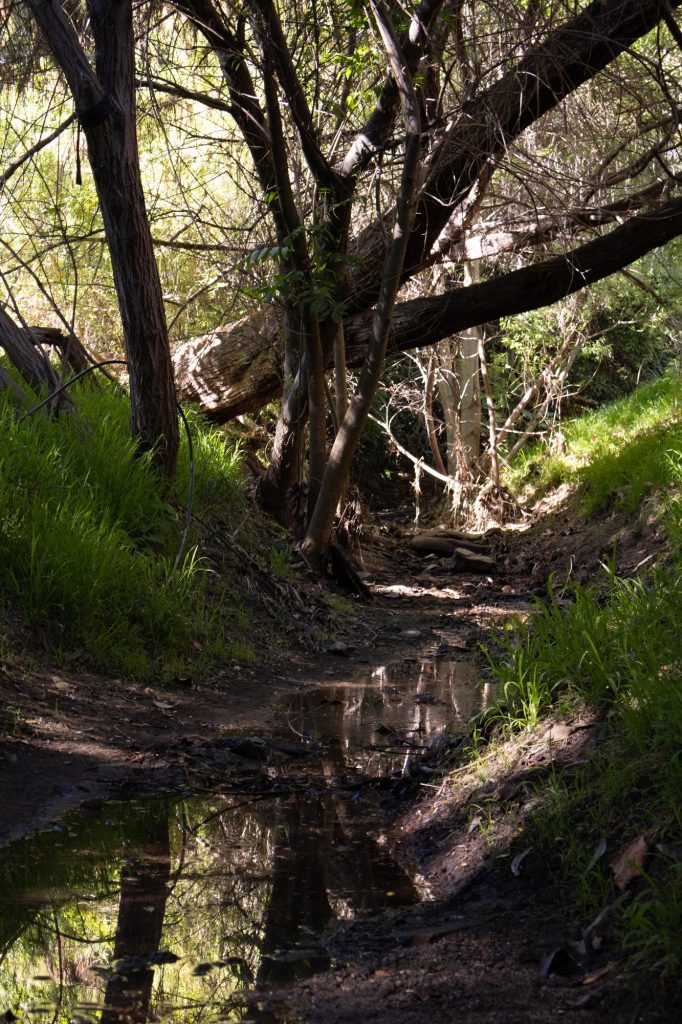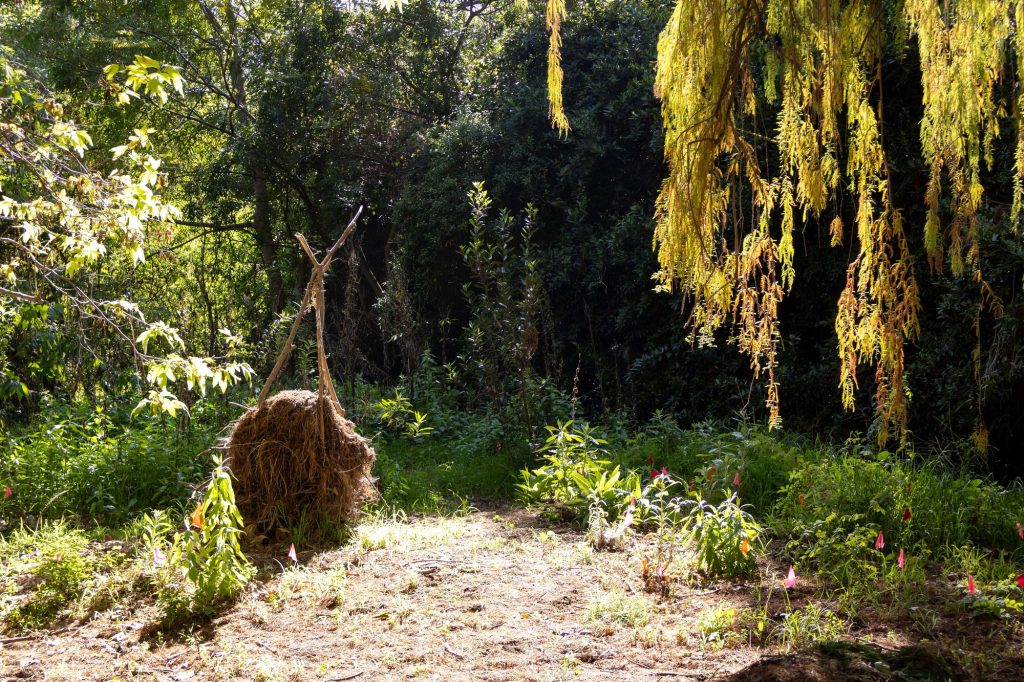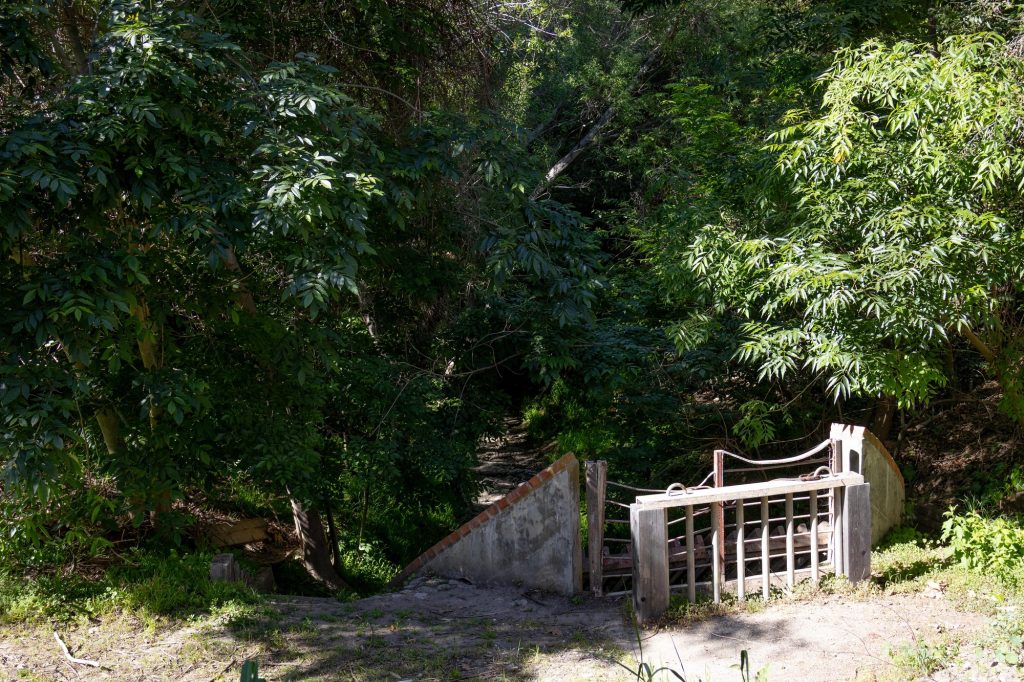Stone Canyon Creek has been considered a hidden gem and “UCLA Unseen” for over 10 years. Located next to the Anderson School of Management and running all the way to the UCLA Lab School, the creek stretches for about 1,200 feet of vibrant, lush greenery and houses multiple native species such as native shrubs, grass, trees, 10 native plants and seven bird species. The creek was the only remaining natural riparian habitat in the area and before making way for the UCLA campus to be built, it was an open creek that thrived.
Stone Canyon Creek is currently an active site of restoration—going on for about 20 years—and continues to be a focus of extensive habitat restorative work. In the early 1900s, the creek used to be a signature part of the campus before most of the creek was buried underground as the campus expanded. Before long, the development and introduction of invasive species caused a decline in diversity at Stone Canyon. According to Mark Abramson, formerly the senior Watershed Director for the Santa Monica Bay Restoration Foundation, the Creek Restoration Project started when a few math graduate students found the remains of the riparian habitat and went to him about restoring the remnants of the old creek to a condition better than it was before. That’s when the Bay Foundation, with the aid of UCLA Lab School, partnered with the Institute of Environment and Sustainability, to start work on Stone Canyon Creek to restore the watershed through community events. From there, the Ecological Restoration Association, or ERA, founded by a group of students from the Ecology and Evolutionary Biology 136 course, got involved in the ecological aspect of Stone Canyon Creek. Today, Lecturer Alison Lipman works with the Ecological Restoration Association to continue the work done so far.
Spending time visiting Stone Canyon Creek would prove to be a rewarding experience and offer the opportunity to engage, learn and enjoy nature. These efforts both contribute to the health of the creek ecosystem and promote a sense of community through joint efforts in stewarding the area. By working together, the combined impact of those involved will play a key role in supporting the area’s sustainability and ensuring that future generations can enjoy the visual paradise aspect of the habitat.
The goal behind the restoration has always been to restore biodiversity, improve ecological function, increase and protect habitat and preserve the creek’s natural beauty with the hope that eventually, through staying consistent in efforts, the more the ecological function and biodiversity of the area improves, the more lost native animal species will find their way back to their newly restored habitat. Volunteers coordinated by the ERA help with meeting this vision by improving the creek’s water quality, eliminating invasive species, replanting native species and spreading awareness to student volunteering and other opportunities to become involved in restoration projects and events.
The environmental impact from the work done by volunteers, students and faculty on Stone Canyon Creek has been impactful, and progress made towards this ideal vision of restoring the habitat to its former natural beauty has materialized in a significant way. From the view of the Anderson School of Management, Stone Canyon Creek looks as vibrant as ever with its tall swaying greenery and a constant running creek that runs even faster when it rains. This wouldn’t have been possible without the work of those involved. Instead, it would have been likely that 20 years later, the invasive species would have taken over, and the creek would barely consist of more than a trickle of water, if anything at all. A small number of animals could inhabit the area, none of the native species would exist and it would look dead, dry, empty and full of weeds relying on the course of nature to preserve the remainder of life.
This restorative work not only functions to aid the surrounding ecosystem but also provides a quiet space for students to relax, work or simply enjoy nature. In a way, the preservation of Stone Canyon Creek draws students away from the stress of society and back to our natural habitat by offering a peaceful retreat to recharge with the environment around us and a living laboratory for students to learn the skills and techniques for restoration.
For more information or to get involved, view this page or reach out to [email protected]. Volunteering is open to anyone with an interest in ecological fieldwork, preservation of natural habitats or simply enjoying spending time in nature.

Although shaded by trees and grasses, Stone Canyon Creek exposes a dry riverbed at its southernmost point. Without recent rainfall, the clear water slows to a trickle as it nears campus. Photographed by Julia Gu/BruinLife.

A pink flag marks a native plant along the creek bank. Restoration efforts like these are often overlooked but are crucial to preserving the biodiversity of UCLA's campus. Photographed by Julia Gu/BruinLife.

Sunlight dapples through the trees that border the creek. Over the years, the elements have turned older trees into bridges as younger trees grow proud and upright beside them. Photographed by Julia Gu/BruinLife.

A willow tree sways in the breeze by a structure made of pine needles. Multicolored flags dot the clearing, marking a meadow of native plants. Photographed by Julia Gu/BruinLife.

A brick-lined concrete structure overlooks the end of Stone Canyon Creek. Just a short walk away, a similar metal gate marks where the creek exits UCLA Lab School to the north. Photographed by Julia Gu/BruinLife.

